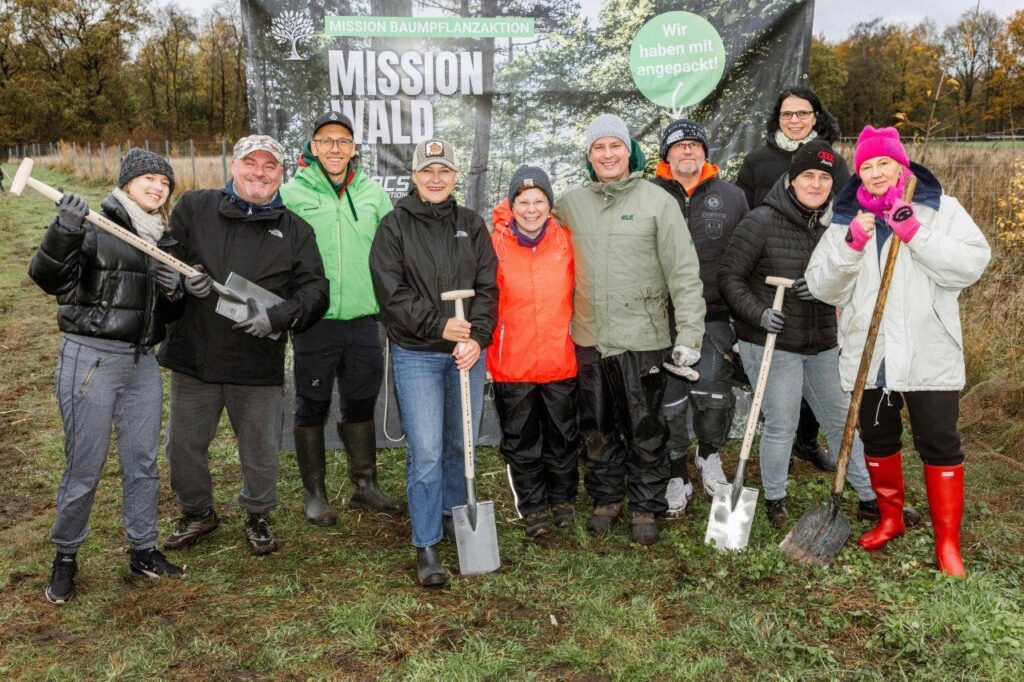The Alfred Wegener Institute or Helmholtz Center for Polar and Marine Research, or AWI for short, is recognized worldwide for its significant contributions to research into the oceans and polar regions. With a comprehensive approach that includes, among other things, marine biology, glaciology and climate research, the institute contributes to understanding the effects of climate change on the “Earth System”. On behalf of the AWI, we brought ice cores from Norway to Germany at the end of September and would like to take a closer look at the transport in this article.
Preparations
We have been able to enjoy the trust of the AWI for many years and support the research center with a wide variety of transports.
As a result, we know this customer's requirements very well. However, there is a big difference between transporting equipment or boxes or bringing highly sensitive goods, such as ice cores, from A to B. Everyone in our team is then aware of the responsibility for this freight and everyone is excited when it starts. But before it can even begin, some preparations should be made. This starts with “usual” things; from route planning, to driver selection, the required equipment and provisions for the journey. The ice cores obtained in the Arctic are invaluable for AWI's research.
They contain information about the region's climate over millennia and can provide insights into historical changes in ice and climate. If the transport requirements are not met, the ice cores become unusable for science. The experience we gained with a similar transport a few years ago gave us invaluable advantages in this transport. This meant we were able to take all known eventualities into account in advance and, if necessary, prevent any problems that might arise. We therefore took a generator with us especially for this transport in order to be able to compensate for a possible failure of the cooling unit. This had caused a headache during the last transport and it took ingenuity to ensure that this transport could be carried out successfully. Thanks to our dispatcher, a trained car mechanic, the freight was able to be delivered to Bremerhaven undamaged. Of course, our dispatcher also accompanied this transport, professionally looked after it and documented it.
The transport itself
It was supposed to start on September 21st, 2023 at 9 a.m.
The day before, the truck was checked again in great detail: In addition to the things that a truck driver should check regularly, the function of the generator was tested. Various connection cables with different plugs for the refrigerated container were packed and the generator itself was lashed to the container chassis. We could then start on time and the eyes of the colleagues who had stayed behind followed the truck down the street.
The journey from Stuhr to Sweden went smoothly.
But when the vehicle crossed the Swedish border, it was stuck in a traffic jam. Luckily it doesn't last long, but with such a vast country you don't expect any standstill. With the appropriate breaks and some amusing encounters with moose in the impressive Scandinavian landscape, the vehicle and driver arrived safely in Tromsö and now had more than a day off to enjoy Norway a little.
Well rested, we were able to pick up the AWI's special container on Monday, September 25th and head home.
This time ferries had to be avoided because you have to leave the vehicle on the ferries and walk on the deck of the ferry. However, that would be a source of danger for the ice cores, because the cooling alarm is loud, but cannot be heard on deck given the noise of a ferry. If there are problems here, you cannot react in time to avoid damage. As a result, we had to choose a different route for the journey home and drive the entire route ourselves, even if this meant a longer journey time. The truck, including the container and drivers, arrived late on September 27th without any incidents or major delays.
home territory and the container was ready early on September 28th. will be handed over to the AWI in Bremerhaven. This ended this exciting journey and we can look forward to the insights gained from the analysis of the ice cores. They will undoubtedly help advance research into climate change.
Thanks
At this point we would like to thank the Alfred Wegener Institute for allowing us to report on this transport and I would also like to personally my colleague Bernhard , who kept in touch from time to time and kept in touch with us. This is what made this report possible.





